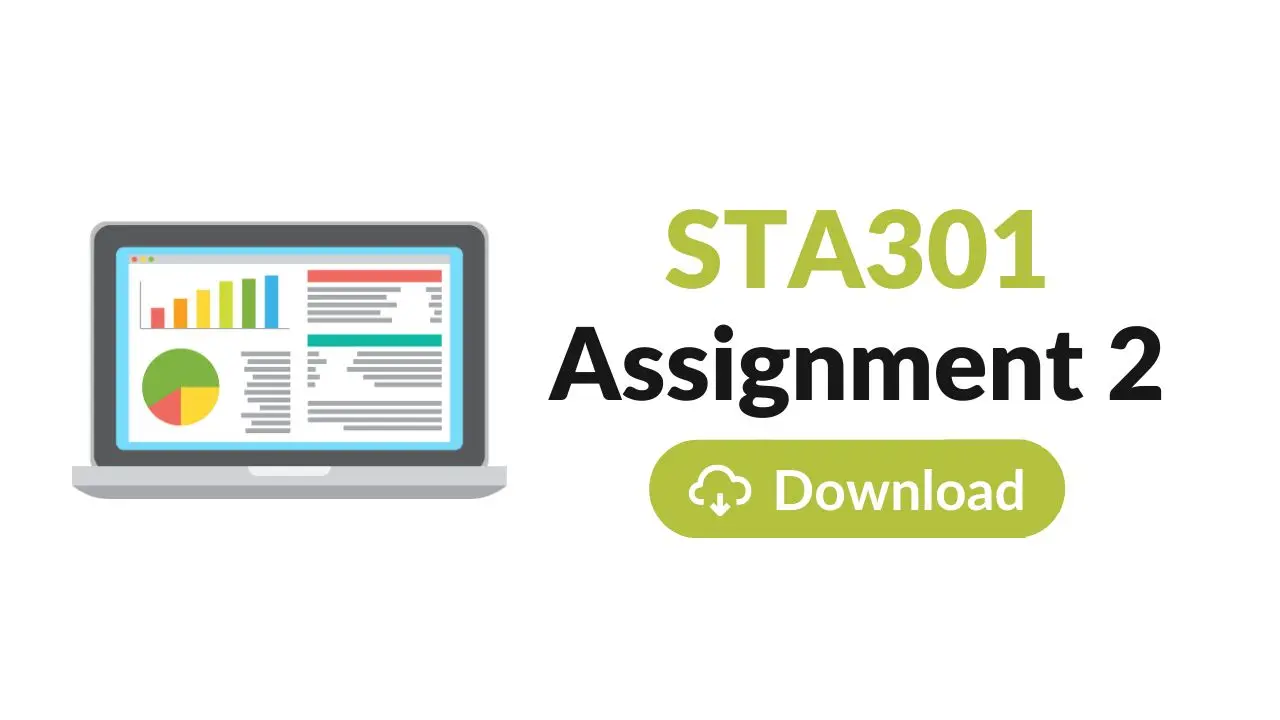Hey there, welcome to the post about STA301 Assignment 2 Solution 2023! If you’re on the hunt for the perfect solution to your STA301 Assignment 2 in the Fall 2023 semester, you’ve come to the right spot. This post has got you covered! We’ve meticulously crafted an ideal solution that will help you shine in your academics. Whether you searched for “Sta301 Assignment 2 Solution 2023,” “STA301 Assignment 2 Fall 2023 Solution,” or simply “STA 301,” rest assured, we’ve got all the answers right here. So, let’s dive in together and conquer this assignment for a successful semester ahead!
Related Posts:
- ENG101 GDB Solution
- MGT211 Assignment No 1 Solution
- CS302p assignment 1 solution
- CS201p Assignment 1 Solution
- VU Handouts
Question #1
If two dice are tossed together, find the probability of the samenumbers appears on the face dice?
Solution
When two dice are tossed together, the sample space consists of 36 equally likely outcomes (each die has 6 possible outcomes). To find the probability of the same number appearing on both dice, we need to determine the favorable outcomes, which is when the same number appears on both dice.
There are six possible outcomes where the same number appears on both dice: (1, 1), (2, 2), (3, 3), (4, 4), (5, 5), and (6, 6). Therefore, there are 6 favorable outcomes.
The probability of an event is defined as the number of favorable outcomes divided by the total number of possible outcomes. In this case, the probability of the same number appearing on both dice is:
Probability = (Number of favorable outcomes) / (Total number of possible outcomes) = 6 / 36 = 1/6
Therefore, the probability of the same number appearing on bothdiceis1/6.
Question #2
If three coins are tossed together, what is the probability of getting at most one head?
Solution
When three coins are tossed together, the sample space consists of 2^3=8 equally likely outcomes (each coin has 2 possible outcomes: heads or tails). To find the probability of getting at most one head, we need to determine the favorable outcomes, which is when we get either no heads or exactly one head.
There are four favorable outcomes:
No heads: (T, T, T)
One head: (H, T, T), (T, H, T), (T, T, H)
Therefore, there are 4 favorable outcomes.
The probability of an event is the number of favorable outcomes divided by the total number of possible outcomes. In this case, the probability of getting at most one head is:
Probability = (Number of favorable outcomes) / (Total number of possible outcomes) = 4 / 8 = 1/2
Therefore, the probability of getting at most one head when three coins are tossed together is 1/2.
A bag contains 5 green balls and 3 red balls. If 2 balls are drawn from the bag randomly with replacement, find the probability distribution of the number of green balls drawn. Also, find the expected value of x.
Question #3
A bag contains 5 green balls and 3 red balls. If 2 balls are drawn from the bag randomly with replacement, find the probability distribution of the number of green balls drawn. Also, find the expected value of x.
Solution
When two balls are drawn from the bag randomly with replacement, the probability distribution of the number of green balls drawn can be determined as follows:
Let’s denote: X = Number of green balls drawn (0, 1, or 2)
To find the probability distribution, we need to calculate the probability for each possible value of X.
X = 0 (No green balls drawn): In this case, both balls drawn must bore. Probability of drawing a red ball = (Number of red balls) / (Total number of balls) = 3 / 8 Since we are drawing with replacement, the probability of drawing a second red ball is also 3 / 8. Therefore, the probability of X=0is: P(X = 0) = (3/8) * (3/8) = 9/64
X = 1 (One green ball drawn): There are two ways to draw one green ball: green-red or red-green. The probability of drawing a green ball = (Number of green balls) / (Total number of balls) = 5 / 8 Probability of drawing is ball = (Number of red balls) / (Total number of balls) = 3 / 8 Therefore, the probability of X = 1 is: P(X = 1) = (5/8) * (3/8) + (3/8) * (5/8) = 30/64=15/32
X = 2 (Two green balls drawn): In this case, both balls drawn must be green. Probability of drawing a green ball = (Number of green balls) / (Total number of balls) = 5 / 8 Since we are drawing with replacement, the probability of drawing a second green ball is also 5 / 8. Therefore, the probability of X = 2 is: P(X = 2) = (5/8) * (5/8) = 25/64
Now that we have the probability distribution, we can calculate the expected value of X:
Expected value of X (E[X]) = Sum of (Probability of X = x) * x for all possible values of x
E[X] = (P(X = 0) * 0) + (P(X = 1) * 1) + (P(X = 2) * 2) = (9/64 * 0) +(15/32*1)+ (25/64 * 2) = 15/32 + 50/64 = 30/64 + 50/64 = 80/64 = 5/4 = 1.25
Therefore, the expected value of X is 1.25.



